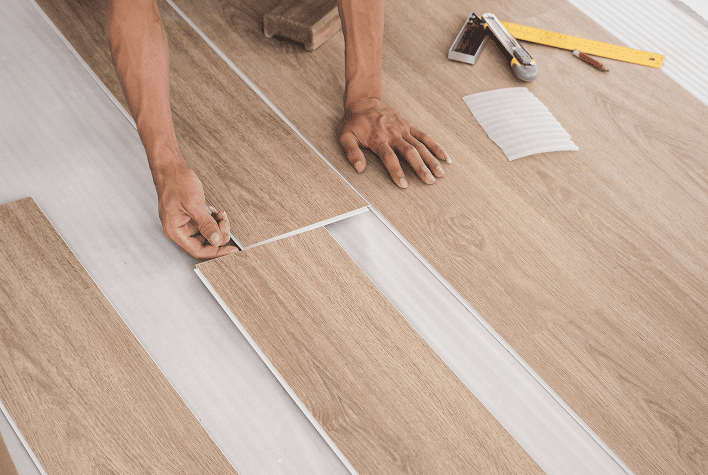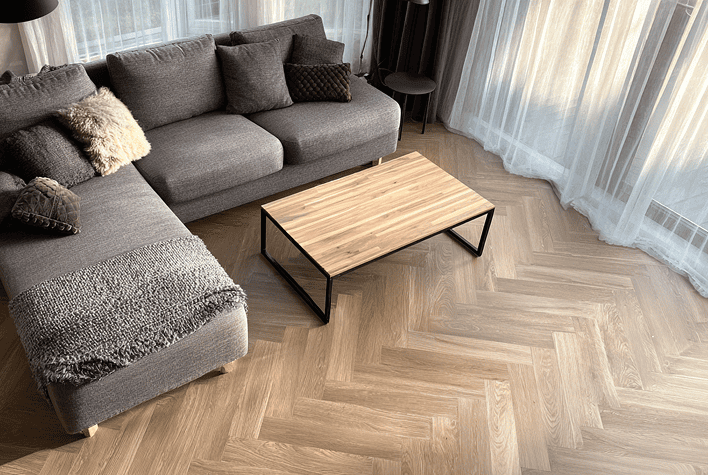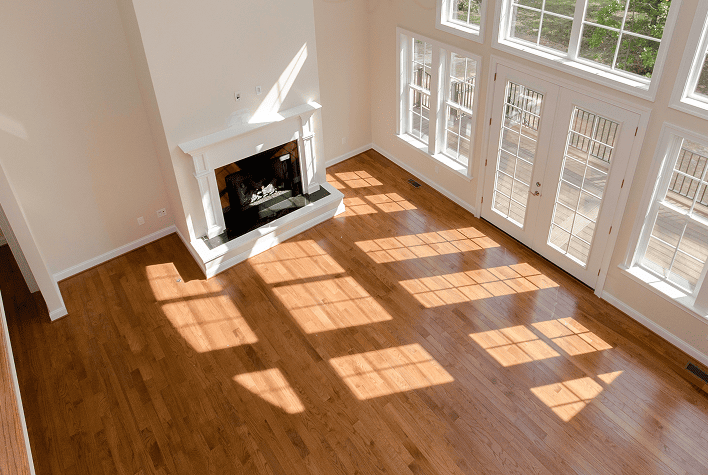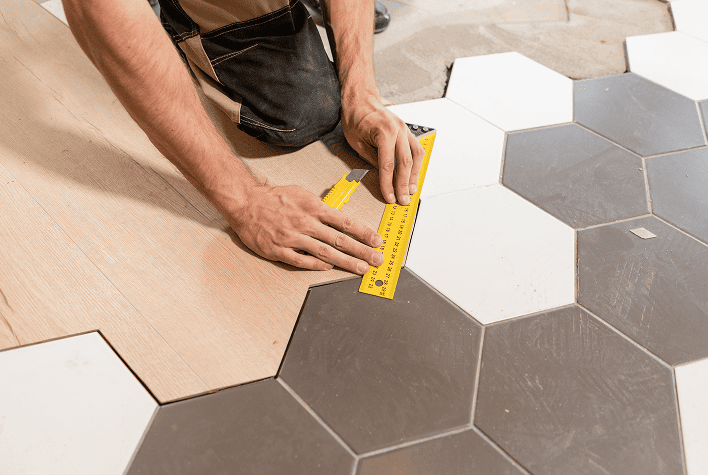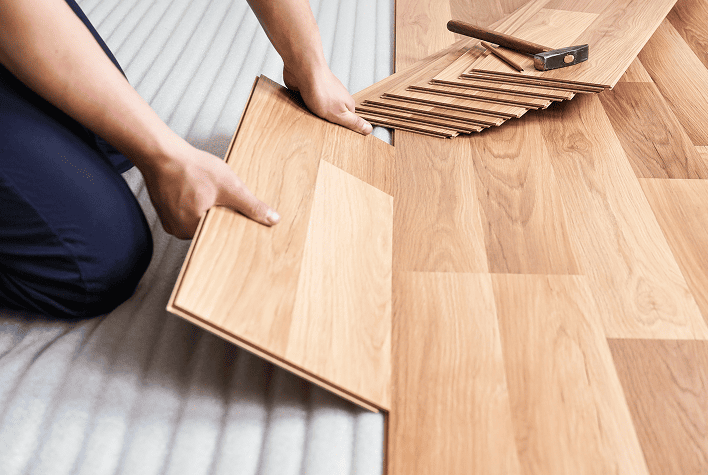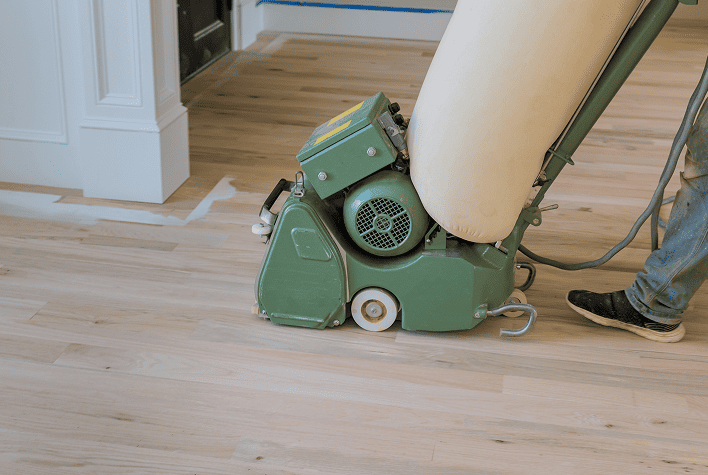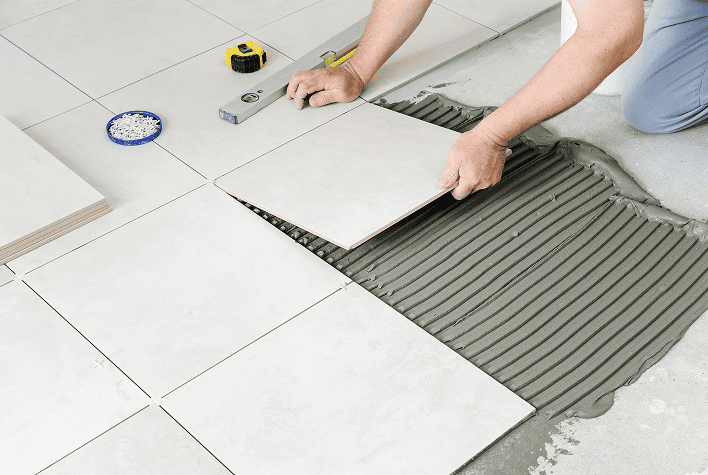
Key Points
- Vinyl flooring is a durable, water-resistant, and affordable choice that offers the look of wood or stone without the high cost.
- Installation prices vary depending on the type of vinyl, room size and layout complexity.
- Thicker vinyl and high-quality finishes provide greater comfort and longevity.
- It’s easy to maintain, making it ideal for high-traffic or moisture-prone areas.
- Don’t forget about underlayment, adhesives and potential removal of old flooring, which can add to the overall cost.
Vinyl Flooring Benefits
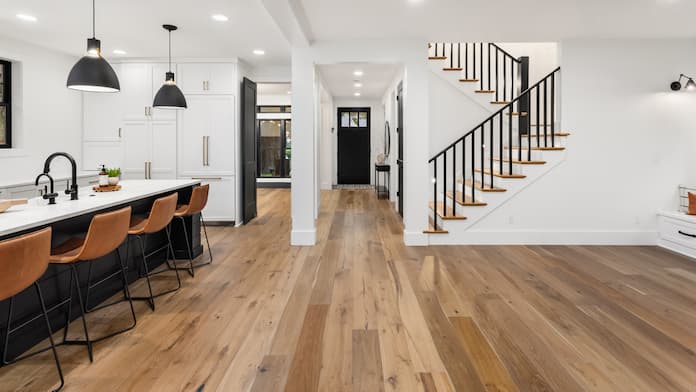
When upgrading your floors, vinyl flooring has become a go-to option for many homeowners! It’s not only affordable but also a great long-term investment. Here are some key advantages that could make it the perfect choice for your home:
Factors that Impact the Vinyl Flooring Installation Cost

So, you’re considering vinyl flooring? Great choice! But before you start your flooring project, it’s important to understand the various factors that can impact the overall installation cost.
Type of Vinyl Flooring
Vinyl flooring comes in a variety of forms, each with a different price point.
- Type of FlooringPrice Range (Per Square Foot)
- Vinyl Plank Flooring (Standard)$2 - $5
- Luxury Vinyl Plank (LVP)$3 - $7
- Luxury Vinyl Tile (LVT)$3 - $7
- Vinyl Flooring Sheets$1 - $3
- Vinyl Composition Tile (VCT)$2 - $5
- Rigid Vinyl Plank (SPC/WPC)$3 - $8
Quality and Thickness
Not all vinyl flooring is the same. The thickness and quality of the material will affect both durability and price. Thicker vinyl flooring provides better comfort underfoot and is more resistant to wear and tear. Typically, thicker vinyl with wear layers costs more but lasts longer. Thin vinyl (2-4 mm) is more affordable, around $1 to $2 per square foot, but less durable. In turn, thicker vinyl (5-8 mm or more) is of higher quality and longer lasting, ranging from $3 to $7 per square foot.
Room Size and Layout
Larger rooms will naturally require more materials and labor, but non-standard layouts, tight corners, or many obstacles (like cabinets or stairs) can increase installation complexity.
For standard rooms, expect $2 to $4 per square foot for labor. For complicated layouts, the cost could increase by $1 to $3 per square foot due to extra cutting and fitting.
Installation Method
Vinyl flooring installation can be done using different methods, depending on the type of product you choose.
Location
What is the labor cost to install vinyl plank flooring? The rates vary across regions, with higher costs in urban areas and lower rates in rural locations. For example, installation rates in cities like New York or Los Angeles may be up to 30-50% higher than in smaller towns. Labor in urban areas is typically between $3 and $6 per square foot. At the same time, in rural areas, it ranges between $2 to $4 per square foot.
Additional Costs
Subfloor Preparation
If your subfloor is uneven, damaged, or moisture-prone, you might need additional prep work. It may include leveling, patching, or moisture barrier installation. This is especially true when installing LVT flooring, as it requires a smooth surface.
Subfloor preparation can cost anywhere from $1 to $3 per square foot, depending on the extent of the work required. Major repairs or replacement might add $3 to $10 per square foot.
Removal of Existing Flooring
Removing old flooring isn’t just about ripping it up, proper disposal is crucial.
- Carpet removal$0.50 to $1 per square foot
- Hardwood or tile removal$1 to $4 per square foot
- Disposal fees$100 to $300, depending on volume
Underlayment
While not always necessary, installing an underlayment can enhance comfort, insulation, and soundproofing. The cost for underlayment typically ranges from $0.50 to $1.00 per square foot. This additional layer helps create a smoother surface for the vinyl flooring.
Vapor Barrier
In moisture-prone areas like basements or bathrooms, a vapor barrier might be required to prevent moisture damage to your new flooring. Basic plastic sheeting will cost $0.15 to $0.40 per square foot. Premium moisture-blocking underlayment will range from $0.50 to $1 per square foot.
Warranties
Many manufacturers offer warranties on their vinyl flooring products, which can range from limited lifetime warranties to shorter terms depending on the quality of the product. While there is no direct cost associated with warranties, selecting higher-quality materials with better warranty coverage may increase initial material costs.
Furniture Moving
Moving furniture before installation is often necessary. Be ready to pay additionally if you hire professionals. Expect to spend around $50 to $150 depending on how much furniture needs to be moved and the job complexity.
Coloring Method
The way color is applied to your vinyl flooring affects both its appearance and durability. Inlaid vinyl, where the color goes all the way through the material, is pricier but can withstand more wear and tear.
- Solid color vinylNo additional cost
- Printed vinyl$0.50 to $2 more per square foot
- Inlaid vinyl$1 to $5 more per square foot
Best Tips to Choose the Vinyl Flooring for Your Home
Choosing the right vinyl flooring for your home is about more than just picking a style you like. It involves balancing aesthetics, durability, budget, and practicality. If you’re planning to install vinyl flooring, here are some expert tips to guide you in making the best decision.
Consider the Room
Different rooms have different flooring needs. Evaluate the specific requirements of each room:
Choose Between Sheet, Plank, or Tile Vinyl
Vinyl flooring comes in three main formats: sheets, planks, and tiles. Each has its advantages:
Choose the Right Thickness
Vinyl flooring comes in varying thicknesses, typically ranging from 2 mm to 8 mm. A thicker vinyl floor offers more durability and comfort:
Check the Core
The core of your vinyl flooring is like its backbone. There are two main types:
Both are solid choices, but SPC tends to be more rigid and durable, while WPC offers a bit more comfort underfoot.
Style and Color
Flooring plays a huge role in your home’s overall look and feel. Do you want the classic warmth of wood, the cool elegance of stone, or something more modern and bolder? Vinyl offers a vast array of styles, from natural wood-look planks to sleek, minimalist designs. Be sure to choose a style that complements your home’s existing décor. Lighter colors can make a room feel larger and airier, while darker tones add warmth and coziness.
Eco-Friendliness
If sustainability is a concern for you, there are eco-friendly vinyl flooring options made from recycled materials. Check for products that are low in VOCs (volatile organic compounds), as these release fewer chemicals into the air and create a healthier environment for your home.
Vinyl Flooring Installation: Saving Tips
Installing vinyl flooring can be a cost-effective way to refresh your home, but there are several ways to reduce the vinyl flooring installation cost. Here are some practical tips to help you.
Install Vinyl Floor Yourself or Hire a Pro?
- Cost Savings: Doing everything yourself eliminates labor costs, potentially saving you $1.50 to $3.50 per square foot.
- Skill Required: Moderate skills are needed. You’ll need tools and to follow instructions carefully. Mistakes can be costly to fix.
- Time Commitment: Expect to spend an entire weekend (or more) installing the floor, depending on the room size.
- Tools: You’ll need to purchase or rent tools like a utility knife, measuring tape, and a floor roller.
- Satisfaction: Completing a DIY project can be rewarding. You get to say, "I did it myself!"
- Risk: Mistakes can lead to uneven flooring or issues later on, like warping.
- Cost: Professional installation costs vary but typically range from $2 to $5 per square foot.
- Expertise: Pros have the experience to get the job done quickly and correctly the first time, saving you stress and effort.
- Time-Saving: A pro can typically finish the job in a day or two, letting you focus on other tasks.
- Equipment Provided: Professionals come equipped with the right tools, so you don’t need to worry about buying or renting anything.
- Guaranteed Work: Most professionals offer a warranty on their work, giving you peace of mind that it’s done right.
- Reliability: Professionals minimize the risk of errors, ensuring your floor looks and performs beautifully for years to come.
If you decide to hire a professional, here are some tips to ensure you find the right one:
Homebuddy.com is a resource for finding top-rated flooring professionals in your area. The platform allows you to compare quotes, read reviews, and select the best pro for your needs. It’s a convenient way to ensure you get quality service without the hassle of extensive research.
Conclusion
So, there you have it! From budgeting to installation, we’ve covered the ins and outs of vinyl flooring costs. Now, armed with knowledge, you’re ready to transform your space without breaking the bank.
Remember, it’s not just about the price tag, it’s about finding the perfect balance of style, durability, and affordability. With the information from this guide, you’re now well-equipped to make smart choices that’ll have you loving your floors for years to come.
Frequently Asked Questions
How long will it take to install vinyl floors?
For a professional, vinyl flooring installation in a standard room can usually be completed in a day or two. DIY projects may take longer, especially if it’s your first time or if the area is large.
What factors should I consider when choosing a contractor for installation?
When selecting a contractor for vinyl flooring installation, consider their experience, customer reviews, and pricing structure. It’s wise to obtain multiple quotes and ask about warranties on both materials and labor.
Can I install vinyl flooring over the existing tile or parquet?
In many cases, yes, as long as the existing floor is level, clean, and in good condition. This process, known as floating floor installation, can save time and money on removal costs. However, it’s crucial to check the manufacturer’s guidelines and consult with a professional.
Is vinyl flooring waterproof?
Most modern vinyl flooring is waterproof, making it an excellent choice for bathrooms, kitchens, and basements. However, excessive moisture can still seep through the seams and damage the subfloor. To maximize water resistance, opt for vinyl planks or tiles with tight-fitting seams.
How do I clean and maintain vinyl flooring?
Vinyl flooring is relatively low-maintenance. Regular sweeping or vacuuming and occasional wet cleaning with a mild detergent are typically enough to keep it in top condition. Avoid abrasive cleaners or tools that may scratch the surface. For tougher stains, consult the manufacturer’s guidelines for recommended cleaning products and methods.
Will vinyl flooring fade in sunlight?
While vinyl flooring has come a long way in terms of UV resistance, prolonged exposure to direct sunlight can cause some fading over time. To minimize this, consider using window treatments in rooms with lots of natural light.
